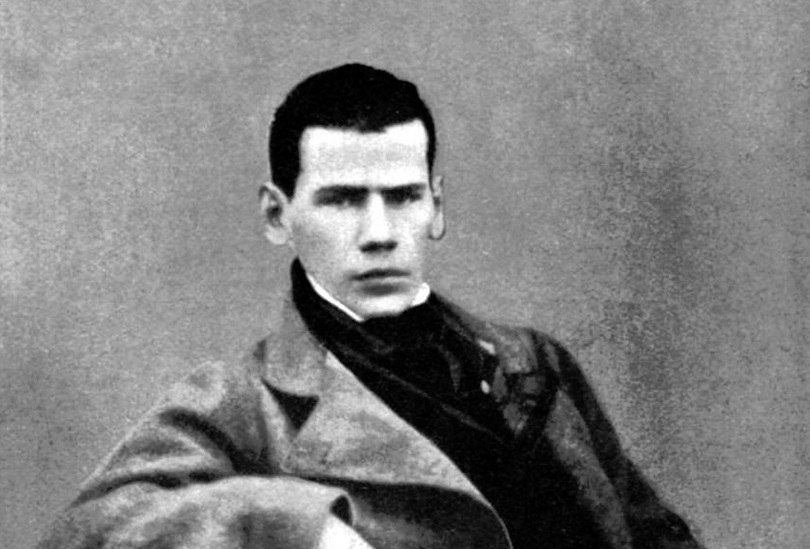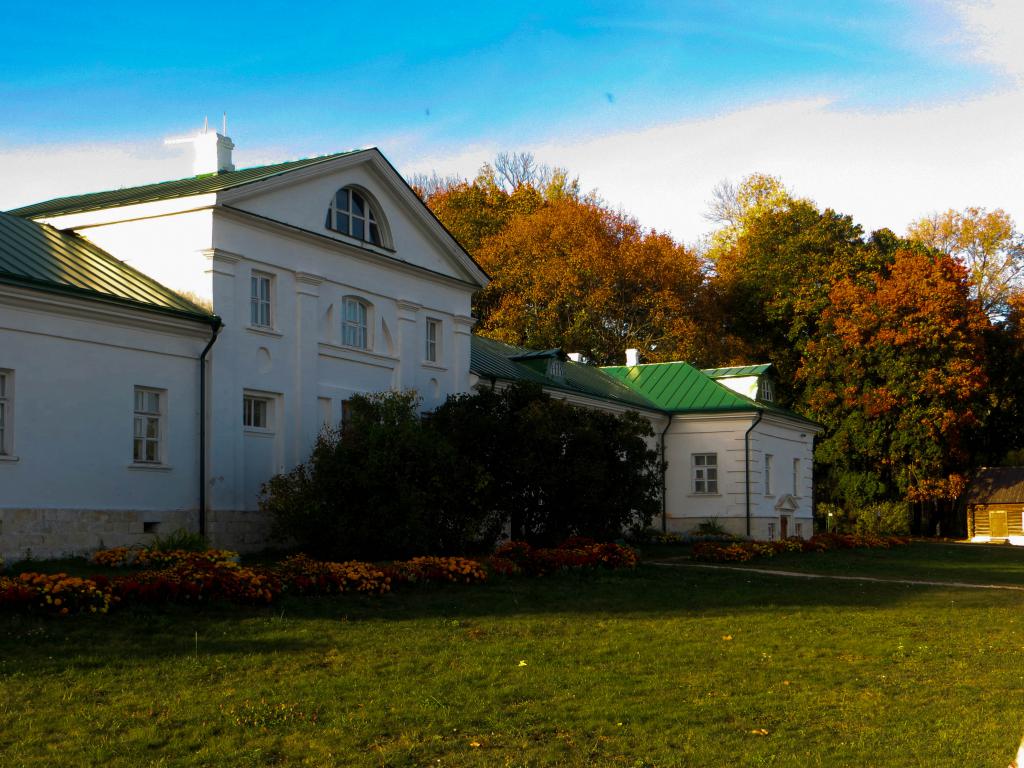Tolstoy is the national pride of his people. It is difficult to overestimate his services to Russian and world culture. Gorky rightly wrote:
He told us about Russian life almost as much as all the rest of our literature. The historical significance of Tolstoy’s work is now understood as the result of everything experienced by Russian society over the entire 19th century, and his books will remain for centuries, as a monument to the hard work done by a genius ...
Not only as a writer, but also as a thinker and public figure, Tolstoy did incredibly much for the development of thought; in his works he collected and expressed all the characteristic features, moods of his era, and his personality itself is a reflection of the time in which he lived. Therefore, not only creativity, but also Tolstoy’s biography is of interest to numerous researchers. And to tell how Leo Tolstoy died, a brief retelling of his life is necessary.
Stages of Tolstoy's life
The life and work of Leo Tolstoy is usually divided into several periods.
His childhood passed in Yasnaya Polyana, the family estate of his mother (who died of a maternal fever when Tolstoy was not even two years old). Then the family moved to Moscow, after another three years - to Kazan, where Tolstoy entered the university. True, he did not finish his studies there, dropped out of law school and came back to his estate. There he tried to make changes that improve the lives of peasants (at the same time he opened the famous Yasnaya Polyana school), but he did not succeed much and again left for Moscow. In Moscow, he led a secular, hectic life, was fond of gambling, and because of this, he was subsequently forced to leave for the Caucasus in order to cut costs and improve his financial situation.

It was in the Caucasus that Tolstoy first turned to literary activity. Then he wrote a semi-autobiographical novel "Childhood", after positive reviews of her Nekrasov (who worked in "Sovremennik", which printed the work) set to continue. Already in connection with the first parts of the trilogy, many critics and writers noted the extraordinary accuracy of psychological portraits created by Tolstoy. The "democratic direction", which later became the main one in Tolstoy’s work, is still far away, but this topic has already been identified here in the characters of courtyards and servants of the noble house.
With the outbreak of the Crimean War, he left to serve in Sevastopol, and his Sevastopol Stories appeared there - it was in them that Tolstoy’s most early expression was expressed in his deep interest in the people.
After the creative crisis and the unsuccessful novel "Family Happiness," Tolstoy reinterprets his views, and his work takes a slightly different direction. In 1862, the "Cossacks" appeared, where for the first time the depraved and idle life of the upper strata of society was contrasted with the simple, labor, life of the people close to nature. Subsequently, this folk life, close to the primitive, alien to the corrupting action of civilization, will become the ideal of the writer, to whom, before he died, Tolstoy devoted most of his literary and social activities.
In War and Peace, Tolstoy developed this idea even more deeply about popular life, about the spontaneous movement of the mass, which determines all of world history and order.
Crucial moment
At the end of the seventies, Tolstoy completed a turning point in his worldview. He speaks of this in his treatise Confession. Elements of the crisis accumulated gradually, it was a long process of reviewing all old beliefs and beliefs, and at the same time, clarifying and defining a new ideological position.
Having broken with his aristocratic nobility, Tolstoy became an exponent of the interests of the patriarchal peasantry. From the standpoint of this peasantry, he mercilessly criticizes all the modern orders of autocratic Russia and bourgeois society in general. Rejecting the foundations of this society, Tolstoy speaks of hostility to their natural needs of man, to his very nature.
Throughout the rest of his life (and, recalling in which year Tolstoy died, it is more than 30 years), the writer will follow his convictions.
Sweatshirt
At the same time, in his articles, he expounds his religious and ethical doctrine — the “new religion,” or “refined Christianity,” and begins a great deal of its dissemination among the broad masses of the people.
The principles of the new doctrine in many respects coincide with the Christian. Tolstoy is preaching predominantly "non-resistance to evil by violence", "non-doing", which consists in the struggle against existing orders, their non-observance, the rejection of the life dictated by bourgeois society. He denies the significance of the achievements of culture, science and religion and believes that the main asset of man is simplicity; praises hard peasant physical labor.
According to Tolstoy, it was his teaching that was called upon to save humanity from all social disasters, to destroy evil on earth, and to establish fraternal unity of people.
Proverbs and Stories
To spread his teachings, Tolstoy writes both journalistic articles and fiction. Bearing in mind the "readers from the people" for whom his literature was intended, Tolstoy develops a completely new style of his "folk stories": extremely simple in form and content, they are imbued with his ideas, the idea of the need for a "good life" is affirmed in all with various variations ", about love for the neighbor, about Christian forgiveness and repentance of our sins. In fact, they resemble evangelical sermons, which undoubtedly lost all the features of Tolstoy's prose before the turn - an in-depth and intense psychological analysis that was the basis of his previous artistic method.
Literary work
However, along with such small stories at the last stages of his life, Tolstoy also creates literary works that are really significant for Russian culture: the novel “Hadji Murad” (never finished), the drama “The Living Corpse”, and the story “After the Ball”. They combine both the deep psychologism developed by Tolstoy and the new revealing pathos, criticism of the existing way of life and human relations.
Yasnaya Polyana
In his family estate, Tolstoy finally settled back in the sixties (but even after that he visited arrivals in Moscow and St. Petersburg). Even then, he enthusiastically embarked on the transformation, hoping to improve the life of the peasants and create good living conditions. However, the gap between the landowner and the serfs was still too great, and he did not succeed (later the writer will try to comprehend his failures in the story "Morning of the landowner"), but the Yasnaya Polyana school for peasant children aroused great interest. The unique educational experiment conducted by Tolstoy was a great success and became the subject of study for many pedagogical schools.

In 1862, Tolstoy married Sofya Andreyevna, and it was thanks to this heroic woman that the house in the estate acquired the form in which we know it (or rather, the outbuilding that remained after the sale of the large Yasnaya Polyana house). Also, Tolstoy himself planted many apple orchards and forests that adorned the estate.
In that period of life and until his death, Tolstoy himself worked a lot on the territory of his estate and on land in accordance with his ideas about ennoblement of peasant labor.
Care
The story begins directly about how Leo Tolstoy died.
The last years of Tolstoy's life were overshadowed by the deterioration of relations with his wife. Despite the large print runs of the writer's books, his large family was always in a difficult financial situation: under the influence of all the same ideas, Tolstoy refused ownership of everything he wrote, and Sofya Alexandrovna sometimes it was not easy to find means of subsistence. In addition, she did not agree with all the opinions of her husband, and disagreements in this area also did not strengthen marital happiness.
In the end, sometimes fearing sometimes for Tolstoy’s mental health and in order to avoid new unusual actions on his part, Sofya Andreevna literally begins to follow him, like a small child. Tolstoy notices this, and is increasingly moving away from home. He begins to keep a new, secret diary that hides from everyone.
In the end, Tolstoy decides that he must comply with the ideas of his teaching with the utmost completeness; Having come to this conclusion, he realizes the impossibility of his further stay in the estate, and secretly leaves Yasnaya Polyana at night on October 28, 1910. He wants to go to the southern provinces and start a peasant life there. In a note left in the name of Sofia Andreevna, he writes that he can no longer lead a life that runs contrary to his convictions, and asks not to look for him and not to disturb him.
Tolstoy began his journey by rail at the Kozlov Zasek station . Together with him was his doctor Makovetsky. First he went to Kozelsk, to Optina deserts, where he had not been for 17 years to talk with the elders. By that time he was already excommunicated. Further, the writer went to the nearby Shamardin Convent, where his sister Maria lived.
There he was caught by the daughter of Alexander Tolstoy. Together with her, he returned from the monastery to Kozelsk and got on a train there. On the way to the station Astapovo he begins to have a fever; the writer has to get off the train.
How Tolstoy died
At five in the morning on November 20 (7), 1910, a sharp deterioration occurred. By that time, the whole family was near the patient. The exact answer to the question, when Leo Tolstoy died, will be 6 hours 5 minutes in the morning: the patient died without uttering a single word. He died without regaining consciousness.
The place where Leo Tolstoy died is Astapovo Station of the Ryazan-Ural Railway. Now there is a museum.
The reasons why Tolstoy died indicate pneumonia, which the organism weakened by old age did not tolerate.
Tomb of Tolstoy
The writer bequeathed to bury himself without a grave. And on November 9, in Yasnaya Polyana, his funeral was held - civil, since Tolstoy died while remaining excommunicated. The writer's grave has neither a cross, nor a tombstone; it is only a small mound on the edge of a ravine in the Old Order forest.
The tradition of the modern museum of Yasnaya Polyana is the complete silence that all visitors observe on the alley leading to and near Tolstoy’s grave.
The whole world community began to shake after these events. His departure and death throughout 1910 were covered in newspapers throughout Europe. Many Russian writers noted this event with their notes or full-fledged essays, memoirs. V. Ya. Bryusov, who was present at the burial, wrote in the article “At the funeral of Tolstoy. Impressions and observations ":
Future generations will learn about Tolstoy much that we do not know. But how will they envy everyone who had the opportunity to see him, talk to him, get any closer to a great man, and even those who, like me, could collect information about Tolstoy from those who knew him personally! Now that Tolstoy is gone, we begin to understand how much it meant - to be his contemporary!
Now you know in what year Leo Tolstoy died, under what circumstances.